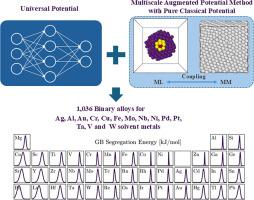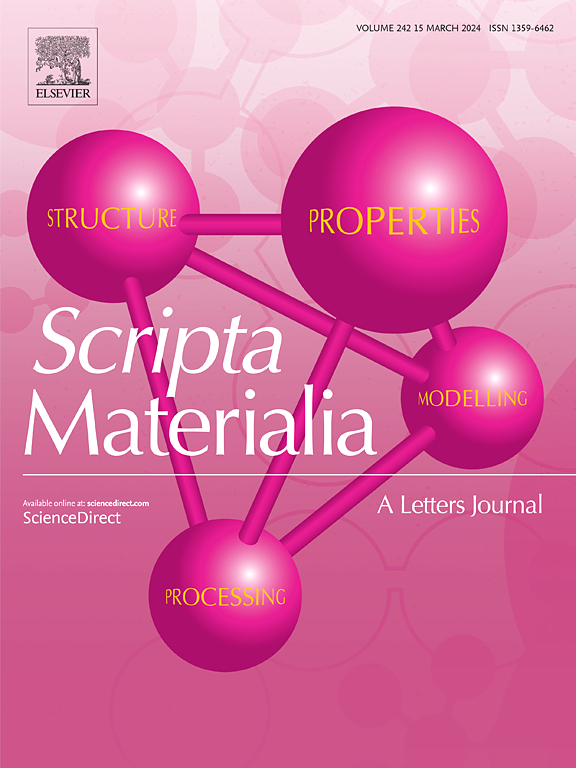增强电位法:多尺度光谱缺陷基因组建模
IF 5.6
2区 材料科学
Q2 MATERIALS SCIENCE, MULTIDISCIPLINARY
引用次数: 0
摘要
由于从第一性原理评估热力学性质所需的计算成本,材料中低对称性缺陷的溶质化学建模一直具有挑战性。在这里,我们提供了一种称为增强势方法的混合多尺度方法,该方法将缺陷部位的通用机器学习势的化学灵活性和高精度联系起来,并在远离缺陷部位的地方实现有效势的计算速度。该方法使我们能够快速计算1036对二元合金(包括Ag、Al、Au、Cr、Cu、Fe、Mo、Nb、Ni、Pd、Pt、Ta、V和W溶剂)的晶界偏析能分布,创建的数据库比以前发表的光谱汇编大5倍,但精度有所提高。该方法还可以解决诸如多晶体中溶质-溶质相互作用等问题,这些问题需要大量的计算工作,为晶体材料中的完整缺陷基因组铺平了道路。本文章由计算机程序翻译,如有差异,请以英文原文为准。

The augmented potential method: Multiscale modeling toward a spectral defect genome
Modeling of solute chemistry at low-symmetry defects in materials is historically challenging, due to the computation cost required to evaluate thermodynamic properties from first principles. Here, we offer a hybrid multiscale approach called the augmented potential method that connects the chemical flexibility and high accuracy of a universal machine learning potential at the site of the defect, with the computational speed of an efficient potential implemented away from the defect site. The method allows us to rapidly compute distributions of grain boundary segregation energy for 1036 binary alloy pairs (including Ag, Al, Au, Cr, Cu, Fe, Mo, Nb, Ni, Pd, Pt, Ta, V and W solvent), creating a database ∼5x larger than previously published spectral compilations, and yet has improved accuracy. The approach can also address problems such as the solute-solute interactions in polycrystals that require significant computational efforts, paving a pathway toward a complete defect genome in crystalline materials.
求助全文
通过发布文献求助,成功后即可免费获取论文全文。
去求助
来源期刊

Scripta Materialia
工程技术-材料科学:综合
CiteScore
11.40
自引率
5.00%
发文量
581
审稿时长
34 days
期刊介绍:
Scripta Materialia is a LETTERS journal of Acta Materialia, providing a forum for the rapid publication of short communications on the relationship between the structure and the properties of inorganic materials. The emphasis is on originality rather than incremental research. Short reports on the development of materials with novel or substantially improved properties are also welcomed. Emphasis is on either the functional or mechanical behavior of metals, ceramics and semiconductors at all length scales.
 求助内容:
求助内容: 应助结果提醒方式:
应助结果提醒方式:


